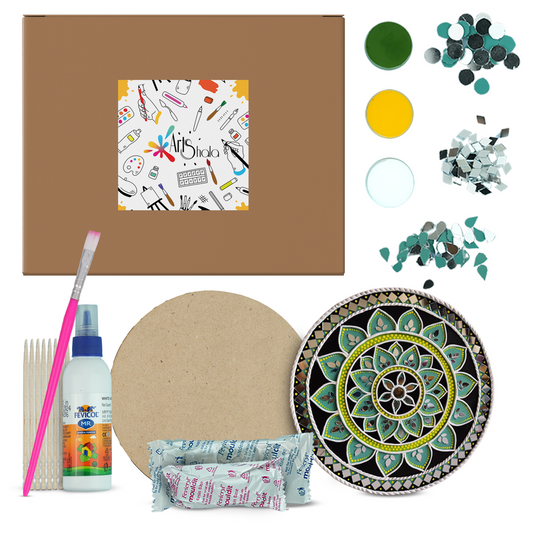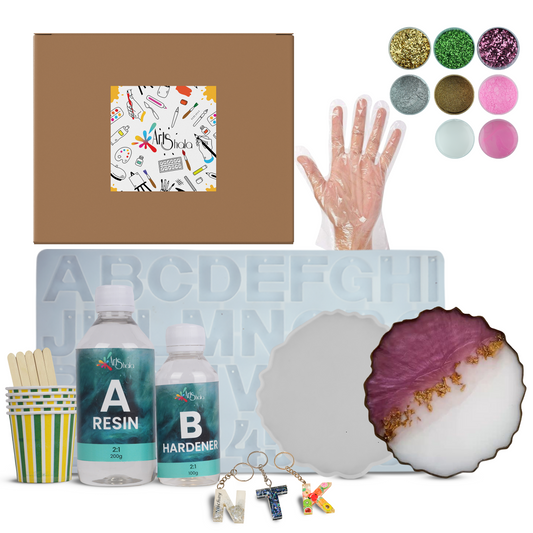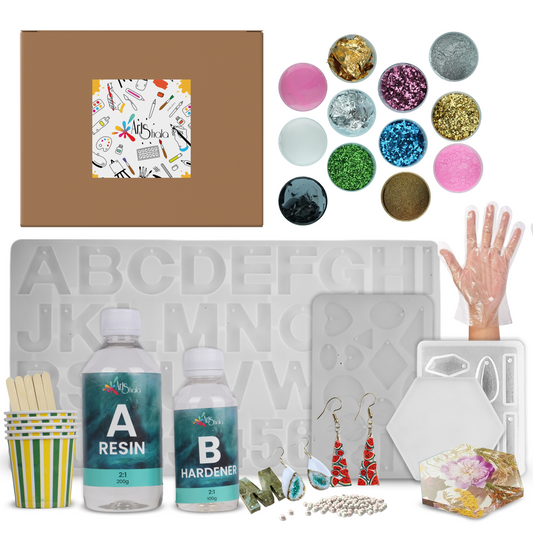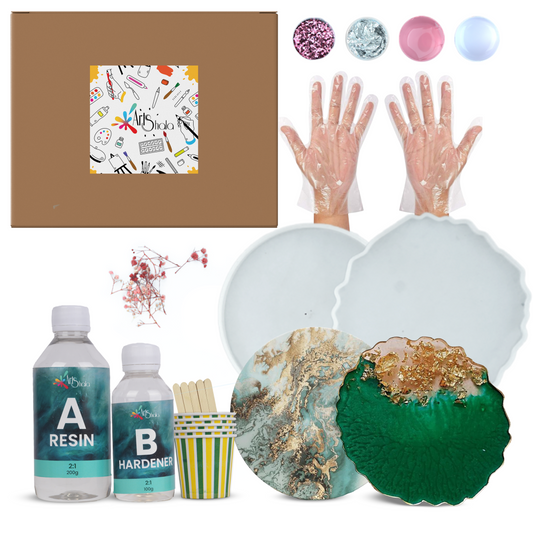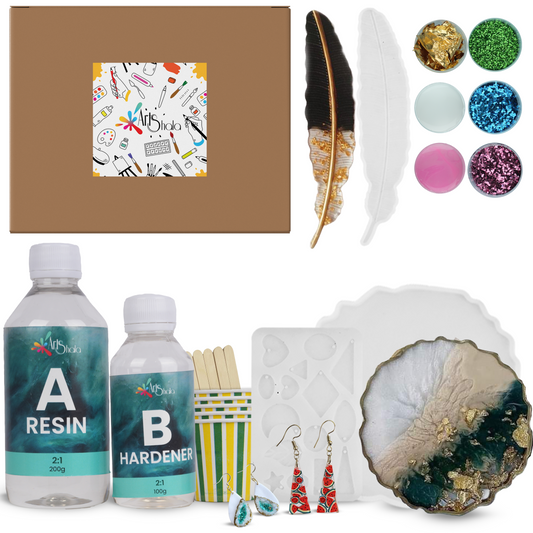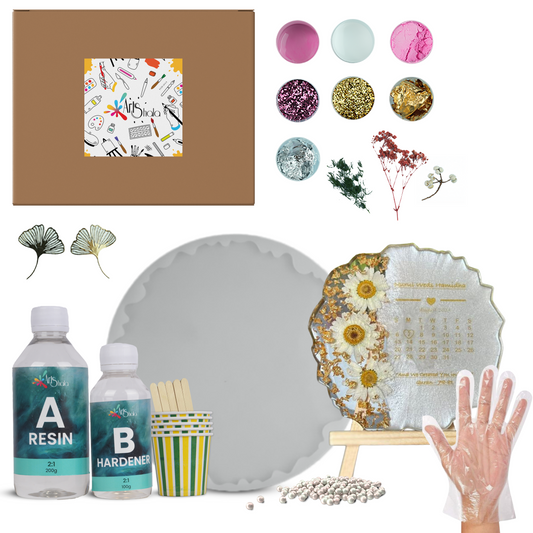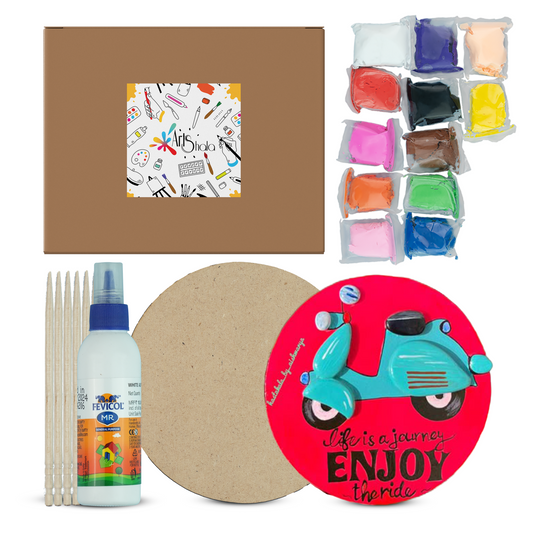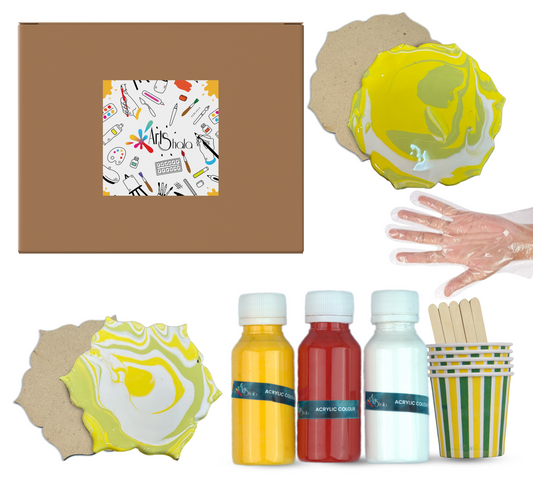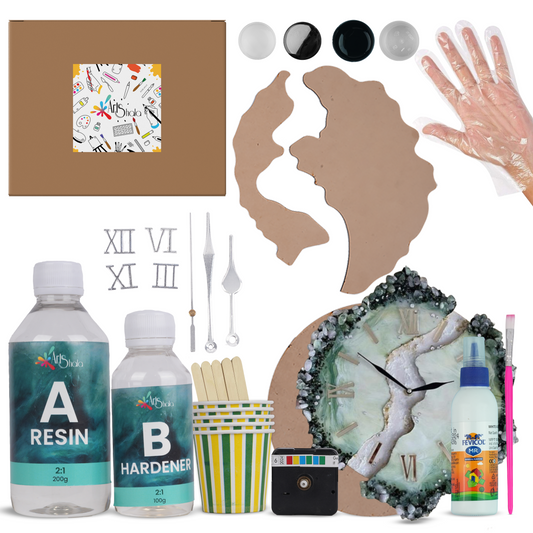How to Make a Colour Darker With Acrylic Paint?
Acrylic paint is a creative medium that allows artists to create stunning and vibrant artwork. One important aspect of acrylic painting is the ability to control values, which refers to the lightness or darkness of colours. Darkening colours in acrylic paint are crucial for adding depth and contrast to your paintings. By making a colour darker, you can create shadows, add dimensionality, and enhance the overall visual impact of your artwork.
If you're new to working with acrylic paint or want to develop your skills further, consider joining an acrylic painting workshop. This will allow you to gain hands-on practice and guidance from experienced artists, allowing you to explore different techniques and gain a better understanding of working with acrylics.
In this blog, we will look into some techniques that you can use to darken colours in acrylic paint. Each method offers a different approach and effect, so feel free to experiment and find what works best for your artistic style and desired outcome.
1. Mixing with Dark Blue or Brown Paint
When it comes to darkening colours in acrylic paint, utilising dark blue or brown paint offers several advantages over using black paint. Dark blue and brown can create a more natural and rich darkening effect, avoiding the risk of muddying the colour, which is often a concern when using black.
To effectively darken a colour using dark blue or brown paint, start by adding small amounts of the darker paint to the original colour. Gradually build up the darkness, ensuring you achieve the desired shade without too quickly going too dark. This incremental approach allows for better control over the final outcome.
It's essential to exercise caution when using dark blue or brown paint to darken colours, as these pigments can significantly alter the hue and intensity of the original colour. By being mindful of the potency of these pigments, you can ensure that the resulting shade aligns with your artistic vision.
2. Using Complementary Colours to Darken Acrylic Paint
When you want to darken acrylic paint, leveraging the power of complementary colours can be a game-changer. Complementary colours are a set of colours that are in opposition to each other on the colour wheel. Mixing a colour with its complement allows you to create unique and vibrant dark shades that add depth and richness to your artwork. Here's how it works:
- Identify the Complementary Colour: Refer to a colour wheel to find the complement of the specific hue you want to darken. For example, the complement of red is green.
- Mixing Proportions: Experiment with different ratios of the original and complementary colours to achieve the desired darkness while maintaining the overall visual appeal.
- Avoiding Mud: While experimenting, it's essential to understand that complementary colours have the potential to cancel each other out or create neutral tones if not mixed properly.
- Explore and Discover: Embrace this opportunity for exploration and discovery in your painting process. Effectively using complementary colours will expand your artistic skills and bring captivating depths and contrasts to your paintings.
Remember, mastering these techniques requires practice and experimentation, so don't be afraid to dive in and discover your unique approaches!
3. Understanding How Acrylic Paints Dry
Acrylic paints have a different drying process that can affect the final outcome of your colours. Understanding this process and considering it when darkening colours with acrylic paint is essential. Here are some key points to consider:
- Acrylic paints tend to dry darker than they appear when wet. This is because the water content evaporates during the drying process, leaving behind a more concentrated pigment. As a result, the colour may darken significantly once it has completely dried.
- To avoid ending up with a colour that is too dark, it is recommended to mix your colours slightly lighter than your desired shade. By doing so, you can anticipate the final darkened result after the paint has dried completely.
- Keep in mind that different brands and types of acrylic paint may have slight variations in their drying process and final colour appearance. It's always a good idea to test your colours on a scrap piece of paper or canvas before applying them to your artwork.
Understanding how acrylic paints dry and anticipating the darkening process can help you achieve the desired results when darkening colours in your acrylic paintings. By mixing your colours slightly lighter than needed, you can ensure that the final result fulfils your vision.
Remember to experiment and modify your techniques based on the specific characteristics of the acrylic paint you are working with. This will give you better control over the values in your artwork and enhance your overall artistic practice.
4. Using Fewer Colours for Greater Depth
Working with a limited colour palette can offer several advantages in creating depth and richness in your artwork. Here are some talking points to consider:
- Benefits of Limited Colours: By using a restricted range of colours, you can achieve a more cohesive and harmonious look in your paintings. This approach allows for greater control over the values and tones, especially when creating darker areas.
- Guidelines for Selecting Colours: When choosing colours for your limited palette, focus on selecting hues that can be easily manipulated to achieve darker values. For example, selecting deep blues, earthy browns, and rich greens can provide a solid foundation for creating darker shades.
Utilising a limited colour palette can help you explore the intricacies of colour mixing and enhance your understanding of acrylic painting techniques.
5. Experimenting with Different Methods for Darkening Colours
There are many ways to make colours darker when working with acrylic paint. It's essential to be open to trying new things and combining different techniques that match your artistic style and achieve the effects you want in your paintings. By experimenting with various methods, you can find interesting ways to darken colours and add depth to your artwork. Here are some techniques you can explore:
- Layering: Try applying thin layers of darker colours on top of lighter ones to create complex shades.
- Dry Brushing: Use a dry brush that contains a relatively small amount of paint to add subtle dark accents or textures while preserving the underlying layers.
- Mixing Mediums: Experiment with mixing acrylic gels or pastes into your paints to change their transparency and make them darker.
Conclusion
Understanding how to make colours darker in acrylic painting is crucial for creating depth and dimensionality in artworks. It allows artists to add shadows, create contrast, and bring focus to certain areas of their composition. Experiment with the techniques discussed in this blog and develop your unique approaches to colour darkening. Don't be afraid to mix different shades, play with light sources, or explore unconventional methods – this is where true creativity thrives!
Remember, practice makes perfect. The more you work with acrylics and explore different ways of manipulating colour intensity, the better you'll become at using this versatile medium to express your artistic vision. If you're looking for more guidance and inspiration on acrylic painting, Contact Us on Arts Shala today, where you can access tutorials, interact with fellow creatives, and get personalised feedback on your work.



